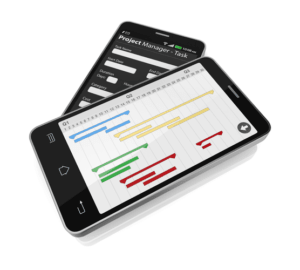
Therefore the account Accumulated Depreciation – Equipment will need to have an ending balance of $9,000. The income statement account that is pertinent to this adjusting entry and which will be debited for $1,500 is Depreciation Expense – Equipment. Prepaid accounting is the process of paying for expenses in advance before they are incurred or consumed. These expenses are recorded as assets on the balance sheet because they have future economic benefits.

What’s the difference between prepaid insurance and an insurance expense?
Prepaid assets are different from prepaid cards or prepaid debit cards, which are payment methods that allow you to spend money that you have already loaded onto the card. Prepaid cards are not considered as assets, because they do not have future economic benefits. Hence, prepaid insurance journal entry does not affect the total assets because it increases one asset account and decreases another asset account at the same amount.
How confident are you in your long term financial plan?

When the asset is charged to expense, the journal entry is to debit the insurance expense account and credit the prepaid insurance account. Thus, the amount charged to expense in an accounting period is only the amount of the prepaid insurance asset ratably assigned to that period. For example, the following journal entry shows an initial payment of $12,000 for one year of insurance, which is recorded as an asset. At the payment date of prepaid insurance, the net effect is zero on the balance sheet; and there is nothing to record in the income statement.
How Is Prepaid Insurance Recorded?
- Equipment is a noncurrent or long-term asset account which reports the cost of the equipment.
- Let’s assume the review indicates that the preliminary balance in Accounts Receivable of $4,600 is accurate as far as the amounts that have been billed and not yet paid.
- Prepaid expense is an expenditure that is paid for in one accounting period, but for which the underlying asset will not be entirely consumed until a future period.
- A key example of contra liabilities includes discounts on notes or bonds payable.
- When a business pays for an expense in advance, it records a debit to a prepaid expense account (an asset) and a credit to a cash account (also an asset).
Contra liabilities reduce liability accounts and carry a debit balance. Contra equity accounts carry a debit balance and reduce equity accounts. Contra revenue accounts reduce revenue accounts and have a debit balance. Although being a simple concept, it is important for an organization to correctly account for contra expense account and recognize prepaid expenses on its balance sheet. Prepaid assets typically fall in the current asset bucket and therefore impact key financial ratios. Additionally, an organization reporting under US GAAP must follow the matching principle by recognizing expenses in the period in which they are incurred.

Rather, under GAAP accounting, it should be gradually and systematically amortized over the term of the agreement. Therefore under the accrual accounting model an entity only recognizes an expense on the income statement once the good or service purchased has been delivered or used. Prior to consumption of the good or service, the entity has an asset because they exchanged cash for the right to a good or service at some time in the future. The advance purchase is recognized as a prepaid asset on the balance sheet. A current asset which indicates the cost of the insurance contract (premiums) that have been paid in advance.
How much will you need each month during retirement?

- In this journal entry, the company records the prepaid insurance as an asset since it is an advance payment which the company has not incurred the expense yet.
- Whereas assets normally have positive debit balances, contra assets, though still reported along with other assets, have an opposite type of natural balance.
- A related account is Insurance Expense, which appears on the income statement.
- Assume that a company’s annual premium on its liability insurance policy is $2,400 and is due on the first day of each year.
- The articles and research support materials available on this site are educational and are not intended to be investment or tax advice.
- Below you’ll find a detailed description of each one as well as detailed accounting examples for each.


